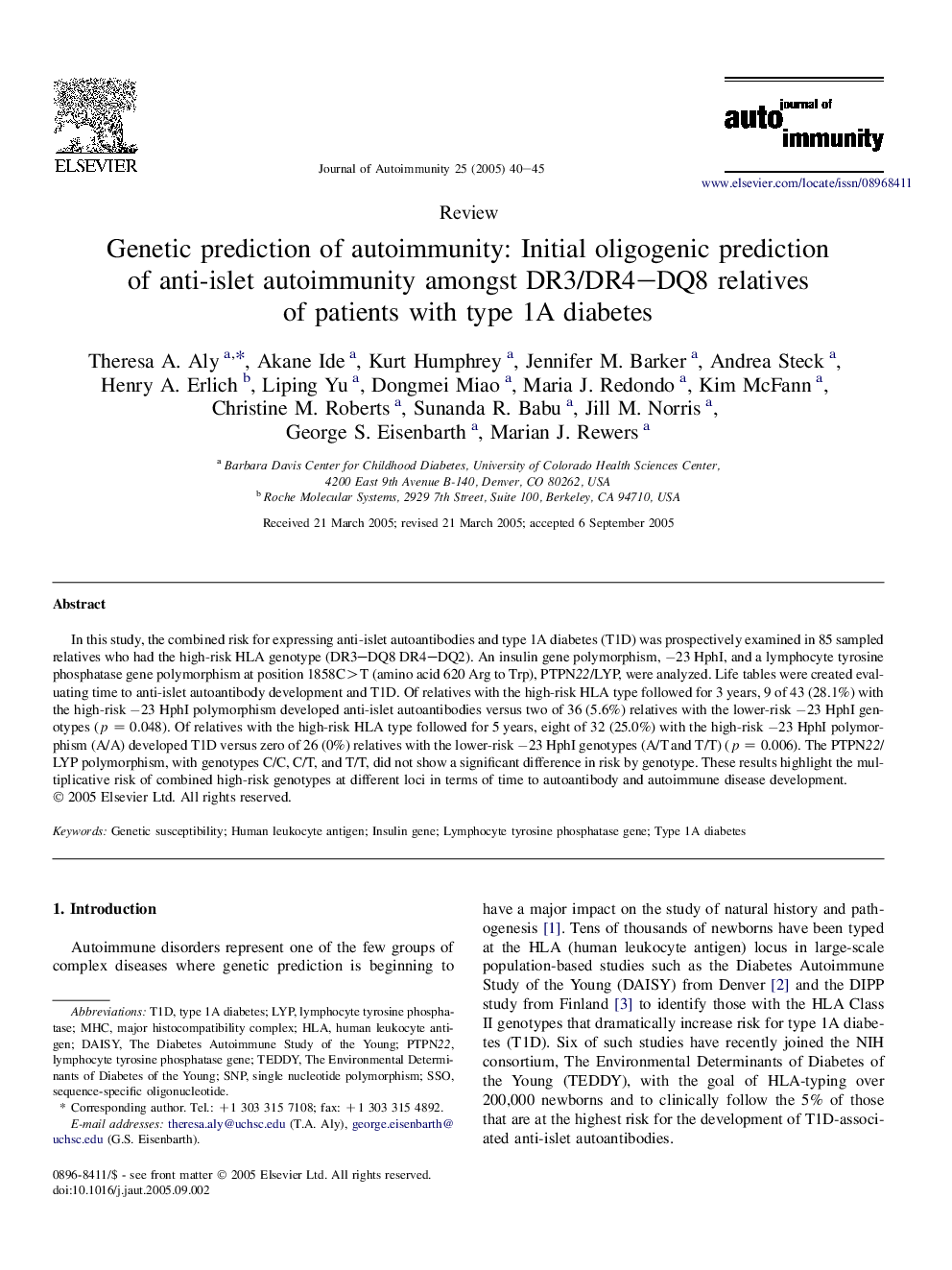| Article ID | Journal | Published Year | Pages | File Type |
|---|---|---|---|---|
| 9267846 | Journal of Autoimmunity | 2005 | 6 Pages |
Abstract
In this study, the combined risk for expressing anti-islet autoantibodies and type 1A diabetes (T1D) was prospectively examined in 85 sampled relatives who had the high-risk HLA genotype (DR3-DQ8 DR4-DQ2). An insulin gene polymorphism, â23 HphI, and a lymphocyte tyrosine phosphatase gene polymorphism at position 1858C>T (amino acid 620 Arg to Trp), PTPN22/LYP, were analyzed. Life tables were created evaluating time to anti-islet autoantibody development and T1D. Of relatives with the high-risk HLA type followed for 3 years, 9 of 43 (28.1%) with the high-risk â23 HphI polymorphism developed anti-islet autoantibodies versus two of 36 (5.6%) relatives with the lower-risk â23 HphI genotypes (p = 0.048). Of relatives with the high-risk HLA type followed for 5 years, eight of 32 (25.0%) with the high-risk â23 HphI polymorphism (A/A) developed T1D versus zero of 26 (0%) relatives with the lower-risk â23 HphI genotypes (A/T and T/T) (p = 0.006). The PTPN22/LYP polymorphism, with genotypes C/C, C/T, and T/T, did not show a significant difference in risk by genotype. These results highlight the multiplicative risk of combined high-risk genotypes at different loci in terms of time to autoantibody and autoimmune disease development.
Related Topics
Life Sciences
Immunology and Microbiology
Immunology
Authors
Theresa A. Aly, Akane Ide, Kurt Humphrey, Jennifer M. Barker, Andrea Steck, Henry A. Erlich, Liping Yu, Dongmei Miao, Maria J. Redondo, Kim McFann, Christine M. Roberts, Sunanda R. Babu, Jill M. Norris, George S. Eisenbarth, Marian J. Rewers,
